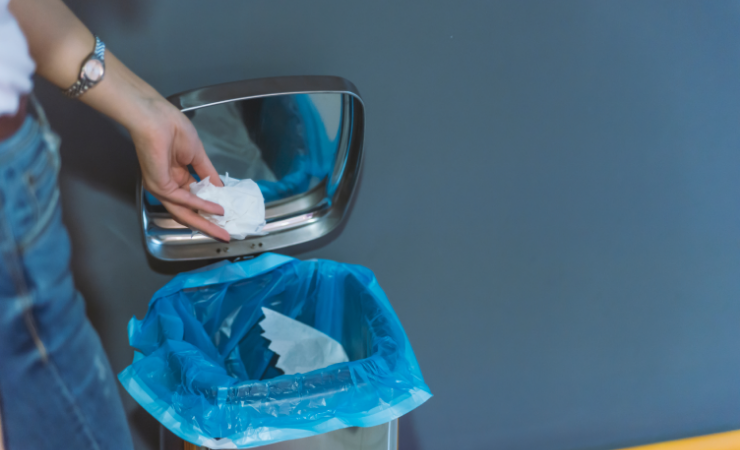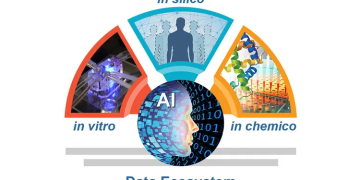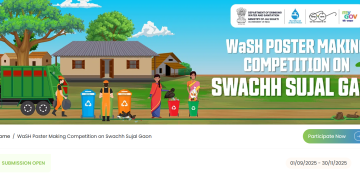Disposable menstrual hygiene products, such as pads and tampons, allow women and girls to manage their hygiene safely, discretely, and with comfort and confidence, enabling their full participation in daily life. While this disposability offers convenience and accessibility, it also creates sustainability challenges due to increased material consumption and waste. Unfortunately, few alternatives currently match this convenience and accessibility while offering improved sustainability.
For this challenge, we are looking to improve the sustainability of menstrual hygiene product disposal. This involves both preventing their escape into the environment and enabling material recovery where appropriate. Our goal is to make disposal an easy, repeatable, and rewarding experience for users, recognizing the unique considerations of this waste.
Disposing of menstrual products often involves heightened concerns about privacy, discretion, and sensitivity to cultural norms and societal beliefs and taboos. Additionally, the stigmatization of menstruation means solutions must actively work to reduce this stigma by being inclusive, respectful, and supportive of all users.
Today, disposal of menstrual products varies widely, including throwing them in the trash, burying, burning, flushing, or disposal in pit latrines. We are now asking for ideas to help change these long-standing behaviors and create new, sustainable disposal practices.
We need your creative ideas to design a disposal system or process for feminine hygiene products that innovates around the real-world practicalities of:
-
Handling and storing quantities of used menstrual products in the home, with attention to privacy, odor control, and discretion.
-
Hand-over or transfer of menstrual products for treatment, using either a pick-up or drop-off model that is sensitive to discretion, community attitudes, and the need to avoid reinforcing stigma.
-
Motivating and maintaining participation in this new behavior change, while reinforcing respect for cultural and societal beliefs about menstruation and menstrual waste, and actively promoting inclusivity and dignity for all users.
Propose a complete process or system for the sustainable disposal of menstrual hygiene products. Your solution must integrate elements of in-home handling/storage, a defined service model, and effective strategies for motivating user participation.
In your solution, please clearly detail each of the following components:
1) In-Home Handling and Storage
Detail the practicalities of managing used menstrual products before transfer:
- Context: Describe the specific cultural context and living situation your idea addresses (e.g., urban apartment, suburban house, rural village, etc.), focusing on how this environment affects disposal practices. Please focus on one specific living situation.
- Storage Practices:
- How long would used menstrual products be stored in the home?
- Where and how would used menstrual products be contained and stored in the home?
- Privacy and Discretion:
- How are odor and privacy managed within the home?
- How does the system ensure discretion and minimize the perception of stigma among household members?
2) Service Model: Transfer and Logistics
Describe the complete process for the hand-over or transfer of products for treatment:
- Service Type: Will the service be a Pick-up (collection comes to the home) or a Drop-off (users take products to a collection location)? Please focus on one model that best fits the selected cultural/communal situation.
- Transfer Process: Describe each step of the transfer process, taking into account privacy, discretion, and community attitudes, including any beliefs or taboos that may influence disposal choices.
- Frequency: How often does this pick-up or drop-off happen?
- Respect and Privacy: How does the service ensure privacy and respect for all users during the transfer?
3) Motivating Participation and Cultural Alignment
Explain how the system encourages and sustains user engagement:
- Behavior Change: How does the service motivate people to join and participate, especially in communities where menstruation is stigmatized or where alternative, unsustainable disposal practices (like burning, burying, or waterway disposal) are common?
- Inclusivity and Dignity: How does the service reinforce participation and actively promote inclusivity and dignity for all users?
- Addressing Alternatives: How does your solution offer safer, more sustainable, and culturally appropriate alternatives to existing practices?
4) Business and Financial Model
- How does your proposed service generate revenue and sustain its operations?
Awards:- $1,600
Deadline:- 04-11-2026








